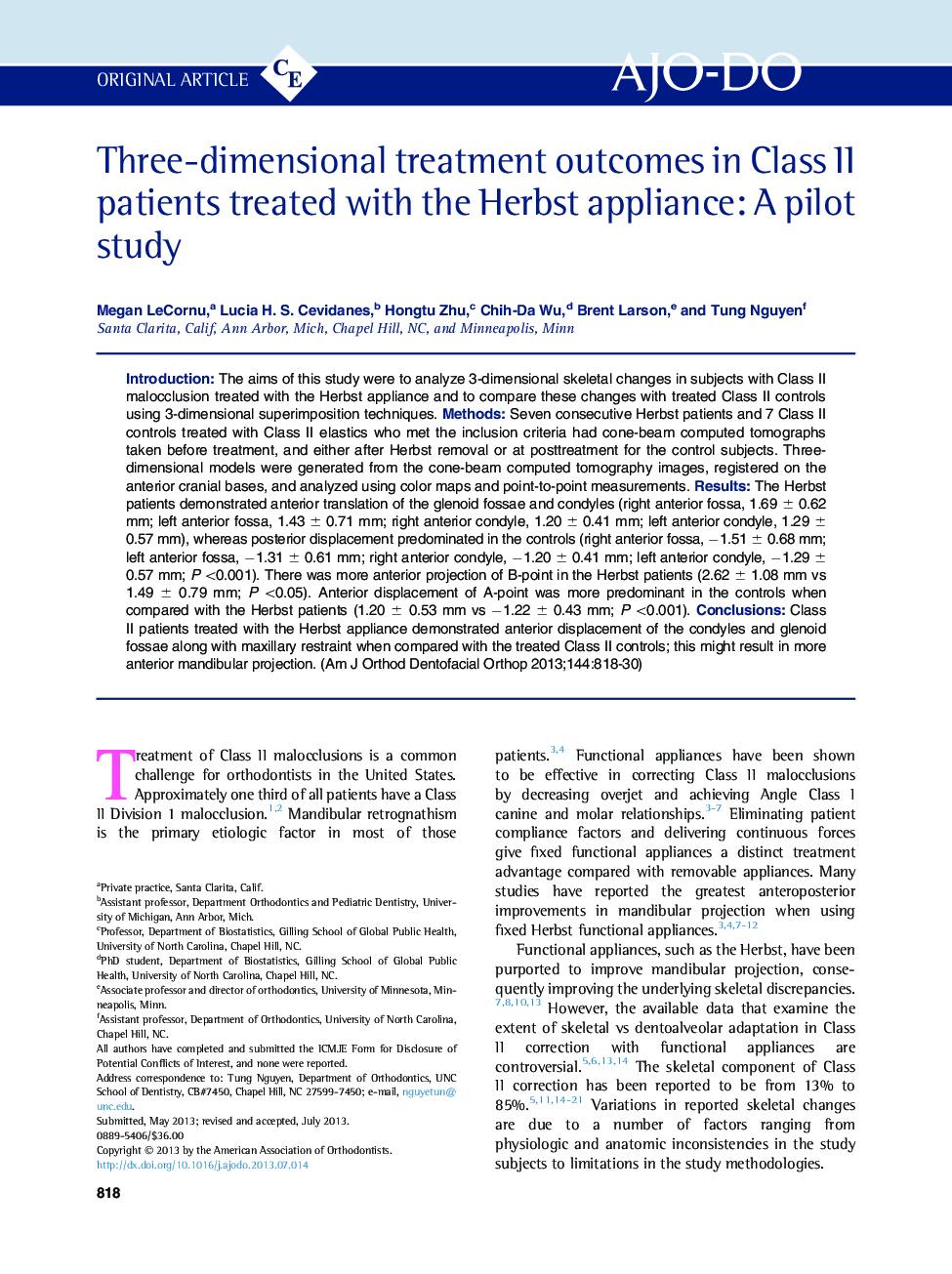| Article ID | Journal | Published Year | Pages | File Type |
|---|---|---|---|---|
| 3116440 | American Journal of Orthodontics and Dentofacial Orthopedics | 2013 | 13 Pages |
IntroductionThe aims of this study were to analyze 3-dimensional skeletal changes in subjects with Class II malocclusion treated with the Herbst appliance and to compare these changes with treated Class II controls using 3-dimensional superimposition techniques.MethodsSeven consecutive Herbst patients and 7 Class II controls treated with Class II elastics who met the inclusion criteria had cone-beam computed tomographs taken before treatment, and either after Herbst removal or at posttreatment for the control subjects. Three-dimensional models were generated from the cone-beam computed tomography images, registered on the anterior cranial bases, and analyzed using color maps and point-to-point measurements.ResultsThe Herbst patients demonstrated anterior translation of the glenoid fossae and condyles (right anterior fossa, 1.69 ± 0.62 mm; left anterior fossa, 1.43 ± 0.71 mm; right anterior condyle, 1.20 ± 0.41 mm; left anterior condyle, 1.29 ± 0.57 mm), whereas posterior displacement predominated in the controls (right anterior fossa, −1.51 ± 0.68 mm; left anterior fossa, −1.31 ± 0.61 mm; right anterior condyle, −1.20 ± 0.41 mm; left anterior condyle, −1.29 ± 0.57 mm; P <0.001). There was more anterior projection of B-point in the Herbst patients (2.62 ± 1.08 mm vs 1.49 ± 0.79 mm; P <0.05). Anterior displacement of A-point was more predominant in the controls when compared with the Herbst patients (1.20 ± 0.53 mm vs −1.22 ± 0.43 mm; P <0.001).ConclusionsClass II patients treated with the Herbst appliance demonstrated anterior displacement of the condyles and glenoid fossae along with maxillary restraint when compared with the treated Class II controls; this might result in more anterior mandibular projection.
